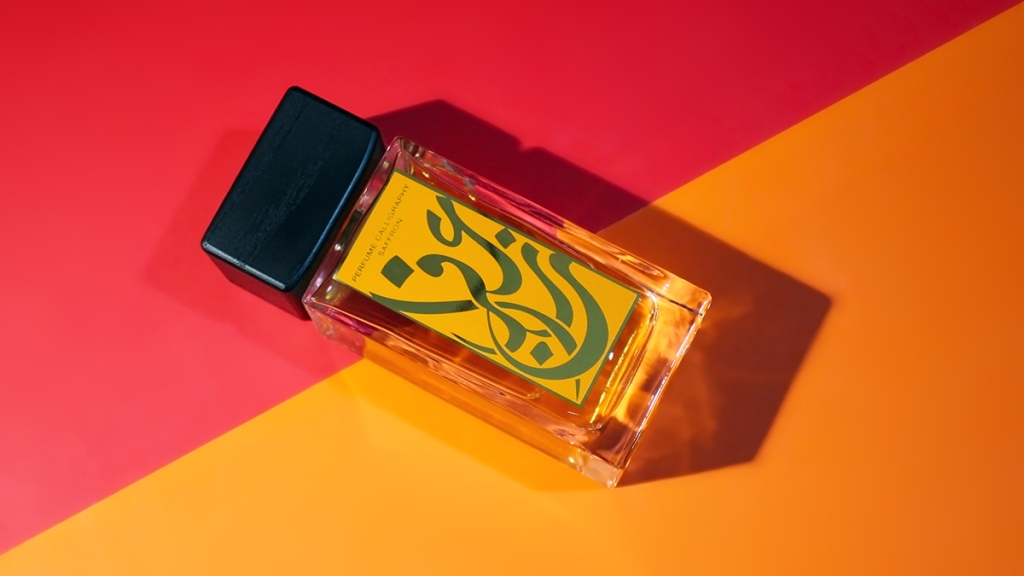
The Aramis brand was launched in 1964 by Estée Lauder Companies as their men’s grooming and fragrance division. Many of you will recognize their eponymous release of 1966 –a highly revered manly composition. Also, the name may ring a bell to anyone who has read Duma’s The Three Musketeers (or seen a movie based on that novel). For people who have no prior experience with the tale, the name Aramis may indeed sound exotic, like some sort of title from distant realms.
Many luxury goods, cosmetic and fragrance companies have made great efforts in the past couple of years to enforce their presence in the Middle Eastern markets, and while the Estée Lauder brand’s attempts to do so felt a little too much like an appropriation (namely Wood Mystique in 2012 and Amber Mystique in 2013), what the parent company released under the Aramis brand did feel successfully reverential, in both package and content, perhaps taking advantage of the ill-conceived exoticism that may arise in the consciousness of consumers from the brand’s name, but that only adds points to the brand’s marketing skills.

The main fragrance was released in 2012 followed by two flankers, Calligraphy Rose in 2013 and Calligraphy Saffron in 2014. The concept from which the fragrances were inspired is that of eastern calligraphy -an art form that takes Arabic writing and elevates it to a very stylized form, creating a simile between calligraphy and perfumery as an art. A highly stylized form of eastern perfumery as seen through western eyes, they would argue.
Calligraphy Saffron was composed by Clement Gavarry as an oriental scent centered around saffron. Upon the first spray, it opens with an interesting note of marigold vaguely embellished with bergamot. The heart and base notes manifest from the very beginning. The saffron, rendered more leathery than anything else, is accompanied by a healthy dose of Turkish rose that sweetens the composition just enough to turn it into a pleasurable experience, followed by the peculiar addition of lavender, while faint, it helps to emphasize the herbal qualities of marigold and as an aromatic contrast to the saffron-rose combo.
The base is comprised of tonka bean and vetiver. The coumarin-laden tonka extends the sweetness of the rose without making it cloyingly syrupy. The vetiver behaves like a solid, woody bed for the rest of the notes. There is also a pinch of styrax bubbling under which serves to highlight the balsamic tones of the symphony. It is a well-blended, linear perfume with decent sillage and longevity that tickles the tastes for balsams, spices, leathery textures and jammy roses.
Back to the marigold, it is an ingredient with herbal, somewhat unctuous and barely floral characteristics, similar to chamomile, that is used infrequently, at least as a central note. The clever inclusion of marigold reminds me of another composition: Montana’s Parfum de Peau, released in 1986 (a leather chypre in the big, loud, and harsh style of the 80s).
I’m not saying that Calligraphy Saffron is a leather fragrance, but as I mentioned, the leathery nuances of the saffron are in full bloom, imparting that texture to the entire composition. Both perfumes have little in common, except for their leathery aspects which are achieved through resolutely dissimilar routes, and the opening note of marigold, which together give very good results in both scents.
As a whole, Calligraphy Saffron is an elegant, interesting, and delightful scent that does a good job of interpreting eastern olfactory sensibilities. As a side note, the calligraphy design on the package of each perfume in the collection was done by Lebanese calligraphy artist Tarek Atrissi. The calligraphy reflects the name of each fragrance, in this case zaeafran, the Arabic word for saffron. It shows how much attention to detail was put into this assemblage. Calligraphy Saffron is a worthy addition to any collection and a great choice for anyone interested in balsamic compositions, in saffron or marigold, or in exploring eastern themes in perfumery.
Name: Calligraphy Saffron
House: Aramis
Concentration: Eau de parfum
Nose: Clement Gavarry
Release Year: 2014
Category: OrientalReviewed Batch: circa 2013
From personal collection.

This is the first time I have heard of this Aramis fragrance, so big thank you for the insightful and educational review.
LikeLiked by 1 person
It was launched in the Middle East market. Some years later it appeared on discount sites such as Fragrance.net and others, and people started paying attention to it. Calligraphy Rose is also very good, somewhat jammy, and powdery at the same time
LikeLiked by 1 person
It’s amazing to see other Aramis scents come out but I never see them in stores – just the older one that every knows.
LikeLiked by 1 person
I believe it was never offered in western markets, but you can find it online, still for a decent price. Both Saffron and Rose are superb. The original Calligraphy is a woody-oudy scent under a veil of bergamot. Very well done, but not life changing
LikeLiked by 1 person
I would say that the one we have here is not really known for it’s quality or anything anymore. Are these newer ones really nice?
LikeLiked by 1 person
Both Saffron and Rose are very nice. Saffron is a little more challenging due to the marigold note
LikeLiked by 1 person
Might have to check them on some sampling sites!
LikeLiked by 1 person